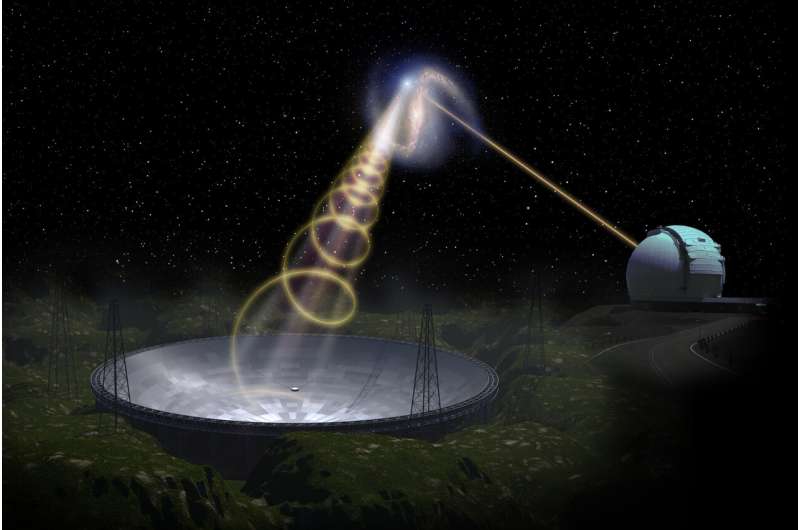
The energy equivalent to the sun's yearly output is produced by fast radio bursts. More than 15 years after the first deep-space radio waves were discovered, their puzzling nature continues to surprise scientists, and new research only deepens the mystery surrounding them.
In the September issue of the journal Nature, new observations from a series of fast radio bursts by an international team of scientists challenge the prevailing understanding of the physical nature and central engine of FRBs.
The observations were made using the massive five-hundred-meter Aperture Spherical radio Telescope in China. Over the course of 54 days, the team detected 1,863 bursts from an active fast radio burst source.
This is the largest sample of data with a single source.
The recent observations suggest that the radio burst came from a dense star with a powerful magnetic field. The origin of distant fast radio bursts is not known. Scientists are questioning what they know about them.
The observations brought us back to the drawing board. FRBs are more mysterious than we have thought. There is more that needs to be done to reveal the nature of these objects.
The strength of the magnetic field and density of particles in the vicinity of the FRB source is what makes the latest observations surprising. During the first 36 days of observation, the variations went up and down, and then stopped before the source quenched.
The film revealed a complex, dynamically evolving, magnetized environment that was never imagined before. It's not easy to expect an isolated magnetar environment. There is a possibility that something else is in the vicinity of the engine.
The team used the 10-m Keck telescopes in Hawaii to look at the FRB. The optical image of the host galaxy shows that it is a metal-rich barred spiral like ours. There is no star-forming activity in the area where the FRB is located.
The location is not consistent with a young magnetar central engine formed during an explosion such as a long gamma-ray burst or a superluminous supernova.
A study titled "A fast radio burst source at a complex magnetized site in a barred galaxy" was published in the journal Nature. Other institutions from China, the US, Australia, Germany, and Israel are also involved in the project.
More information: H. Xu et al, A fast radio burst source at a complex magnetized site in a barred galaxy, Nature (2022). DOI: 10.1038/s41586-022-05071-8 Journal information: Nature